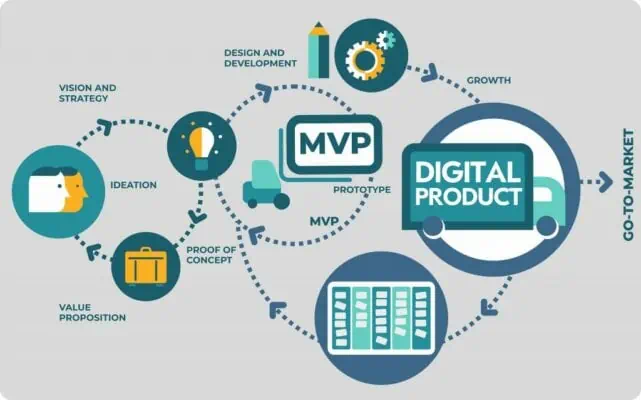In today’s competitive retail market, testing new products before stocking them at stores has become an essential practice and online store owners. This approach allows for evaluating the products’ suitability, understanding customer preferences, and minimizing risks associated with inventory. In this article, we will delve into the process of sourcing, testing, product pages, email marketing, and evaluating products before making them available to in-store experience and online shoppers on Shopify.
How to source sample products and digital products for testing
Before testing and introduce new products, the first step is to find them and get them from reliable suppliers. Finding suppliers that offer quality is crucial for getting a true representation of the products’ potential for success. Retailers can utilize online marketplaces, sell online, trade shows, or industry connections to discover potential agents who can provide products you’re in grocery.

Finding reliable suppliers for product samples
When looking for products store, they should focus on finding reliable suppliers who offer a diverse range of products suitable for testing. This ensures that has access to a variety of options to evaluate and choose from.
Approaching potential suppliers for sample products
Upon identifying potential suppliers, they can approach them directly to inquire about new products. Establishing a professional and respectful relationship with the supplier is essential for obtaining access to quality products.
Email templates for requesting sample products
When reaching out to suppliers, they can use email templates specifically designed for requesting products. These templates can help streamline the communication process and convey genuine interest in testing and potentially selling the products in the store.
Setting up an online store for dropshipping without inventory management
In the world of e-commerce, dropshipping has emerged as a popular retail model that allows them to sell without physical inventory. This model offers several advantages, including the ability to test and manage new without the need for in-store retail space or traditional inventory, reduce costs and improve their service for new customers.
Understanding dropshipping as a retail model
Start a business with dropshipping involves retailing products directly from suppliers, who then ship products to the customers needs on behalf. This approach eliminates the need to hold inventory, as the products are sourced and shipped as per the customer’s orders.
Managing digital without physical inventory
In addition to physical many products, they can also offer digital such as e-books, software, or online courses, allowing for a diverse inventory without the need to selling products online without inventory for physical storage or inventory.
Inventory management strategies for online
For retailers managing physical inventory, efficient inventory management strategies are essential for maintaining accurate evels, fulfilling orders promptly, and minimizing the risk of overstocking or stockouts.
Creating a customer experience with demo example products
When getting to testing the products, they need to focus on creating a captivating customer that effectively showcases the products and encourages potential customers to making a purchasing decisions.
Strategies for demonstrating products
Utilizing high-quality images, detailed product descriptions, and user-generated content such as reviews and testimonials can effectively demonstrate products to your customers and online shoppers, providing them with valuable insights and information.
Utilizing the demo approach to showcase products
Creating product demonstration videos or interactive virtual tours can offer a unique and engaging way to showcase products, allowing customers to visualize and understand the product’s features and benefits.
Importance of a good customer service experience for samples products
Providing excellent customer service, including prompt responses to inquiries, easy return policies, and personalized recommendations, is crucial for creating a positive customer experience with new products and getting further influencing purchasing decisions with profit margins.
Testing and evaluating products for retail suitability on ecommerce

Start building, testing and evaluating products is a critical process for identifying which products are suitable in retail. Retailers rely on customer feedback, sales data, and in-person retail testing to assess the marketability and demand for the products directly to the customer with social media platform.
Identifying the right products in retail stores
Through comprehensive testing and evaluation, retailers can identify the products that align with customer preferences, market trends, and the overall retail business strategy, ensuring that products resonate with the target customer base.
Understanding customer feedback and preferences for sample products
Customer feedback, whether obtained through online reviews, surveys, or direct communication, provides valuable insights into the products’ appeal, quality, and functionality, enabling retailers to make informed decisions regarding and marketing.
In-person retail testing for products
Conducting in-person retail testing with physical products, such as offering products in a physical store setting, allows retailers to observe customer reactions, gather feedback, and assess the products’ performance in a real-world retail environment.
Ready to starting an online store without physical inventory
For retailers considering starting an online store without the burden of physical inventory on hand, several options are available to source and sell goods effectively, paving the way for transitioning from online business to stores layouts based on the products’ success.
Options for sourcing products without inventory
Utilizing dropshipping, working with print-on-demand services, or offering digital are viable options for sourcing and selling goods without the need for physical inventory, providing flexibility and cost-efficiency.

Selling sample products without the need for physical inventory
By leveraging e-commerce platforms, social media marketing, and effective product placement, retailers can sell without the constraints of physical inventory, tapping into a vast target market of potential customers.
Preparing retail stores based on online sales success
Based on the success of online sales and the performance of high-quality products, retailers can make informed decisions about stores, ensuring that the products selected for in-store availability have demonstrated their market appeal and sales potential.
Private Agent for Dropshipping Success